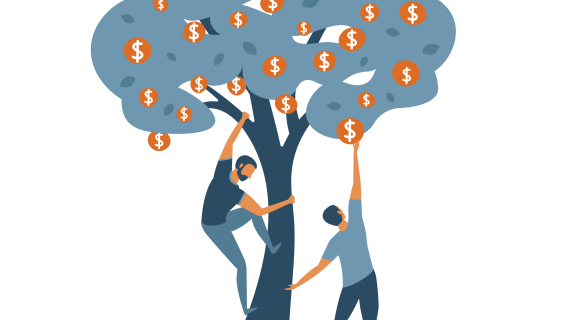Dividend stocks get a bad rap. Many investors consider dividends almost an anachronism. They’re boring stocks that only somebody like your grandfather liked. And today’s real market action is somewhere else.
The attitude is understandable. For the past several decades, non-dividend-paying stocks and sectors have grabbed all the headlines and excitement. Technology has been the best-performing market sector by far in every measurable period over the last 20 years. The attitude has evolved that dividends only slow you down.
But the numbers tell a different story.
From 1973 through 2021 dividend-paying stocks on the S&P 500 produced double the average annual return of non-dividend payers. 9.6% versus 4.79%. And that is a period in which the relative performance of growth stocks was above historical averages. There are good reasons to believe we have entered a period in which the dividend stocks should perform even better on a relative basis.
[text_ad]
Technology and other growth stocks have thrived over the past couple of decades in an environment of low inflation and low interest rates. But things are obviously changing. Rates have soared to near 15-year highs as inflation has been the highest in 40 years. In the past, inflation this high has taken about a decade to get rid of. We might be in an environment of sticky inflation and high interest rates for a long time.
That’s bad news for growth stocks. But dividend stocks should be a much better place to invest. The relative performance of dividend stocks has thrived under such circumstances in the past. And superior returns have indeed played out over the last year of higher inflation and interest rates.
Dividends have contributed about 40% of the S&P 500 total return over the past 100 years or so. But those returns tend to be a much higher percentage in flat and down markets, particularly during times of inflation. In the high-inflation decades of the 1940s and 1970s, dividends contributed a staggering 67% and 73% of market returns respectively.
Plus, dividend companies themselves tend to be more defensive and consistent in tough markets. Here are two great dividend-paying stocks to consider in a new normal of higher interest rates and inflation.
ONEOK, Inc. (OKE)
Yield 5.6%
ONEOK is a large U.S. midstream energy company specializing in natural gas. It owns one of the nation’s premier natural gas liquids (NGLs) systems connecting NGL supply in the Rocky Mountains, midcontinent, and Permian regions in key market centers, and also has an extensive network of natural gas gathering, processing, storage and transportation assets. A whopping 10% of U.S. natural gas production uses ONEOK’s infrastructure.
Here are some things to like about the company and stock.
· Investment grade-rated debt
· 85% of earnings fee-based
· 26 years of stable and growing dividends
· C corporation structure (generate a 1099 and not a K1)
Earnings are resilient because ONEOK operates in the best segments and is well-positioned in the high-growth shale regions. Natural gas is a rapidly growing fuel source that is much cleaner burning than oil or coal. NGL is by far the fastest-growing fossil fuel source. During the pandemic, in one of the worst years ever for the energy industry, ONEOK’s NGL and dry natural gas volumes both continued to grow anyway.
OKE pays a stellar 5.6% yield. That’s not too good to be true for several reasons. The company has grown or maintained the payout for 26 straight years that include recession and terrible energy environments. It has also grown the dividend at a better than 8% average annual clip for the last five years.
Why buy it now?
OKE returned a solid 16.46% in 2022. That was about on par with the rest of the midstream energy subsector. But performance had been much better than its peers. The stock returned a stellar 68% in 2021. The lower relative performance last year was for two reasons. One, after the huge 2021 performance, it didn’t have as much ground to make up. Two, earnings didn’t grow as strongly as much of the sector last year because they never decreased very much during the pandemic.
But despite higher earnings and better prospects, OKE still sells below the pre-pandemic high. Demand for natural gas should remain steady even in a recession because of shortages in Europe and Asia. OKE is a safe stock in a rough market that should continue to perform well while paying a high and safe income.
Realty Income (O)
Yield 4.7%
Realty Income is one of the highest-quality and best-run REITS on the market. Cash flow from a conservative portfolio of over 11,000 properties has enabled the company to amass a phenomenal track record of paying monthly dividends; to such an extent that Realty Income has the audacity to refer to itself as “The Monthly Dividend Company.” It is a Dividend Aristocrat with more than 25 consecutive years of dividend growth.
Realty is the world’s fourth-largest REIT, has operated for over 51 years and currently has 11,427 properties rented to 1,125 tenants in all 50 states, Puerto Rico and the United Kingdom. Since its 1994 IPO, Realty Income has amassed a record as one of the most successful income investments on the market.
Here are a few things to like about it.
· 14.25% average annual total return since 1995
· 631 consecutive monthly dividends
· 100 consecutive quarterly dividend increases
· 117 monthly dividend hikes
· 4.4% annual dividend growth since 1994
· Sky-high credit ratings
How do they do it?
The company buys established properties with a proven record of profitability and rents them to high-quality tenants. The business model is to generally use a “sale-leaseback” arrangement whereby Realty Income purchases the property from the tenant and then the company remains there and pays rent under long-term leases of 10 to 20 years.
Most of these leases are also “net leases,” meaning the lessees pay all the costs associated with the property, including maintenance, insurance and taxes. This arrangement frees Realty Income from unpredictable expenses and the REIT just receives regular rent payments with built-in increases over time.
Although Realty Income is a retail REIT, it is far less volatile than most because of the diversification and remarkably stable clients that offer essential services that are recession-resistant. Its largest clients include Walgreens, 7-eleven, Dollar General, Fedex, Walmart and CVS. Tenants have a historic median 98.2% occupancy rate.
Because of the fact that most tenants are staples that remain strong during a recession, earnings should remain solid, as they did through the pandemic. There are also inflation adjustments built into the contracts.
O is a great way to pick up one of the very best income stocks during a bear market.
[author_ad]

